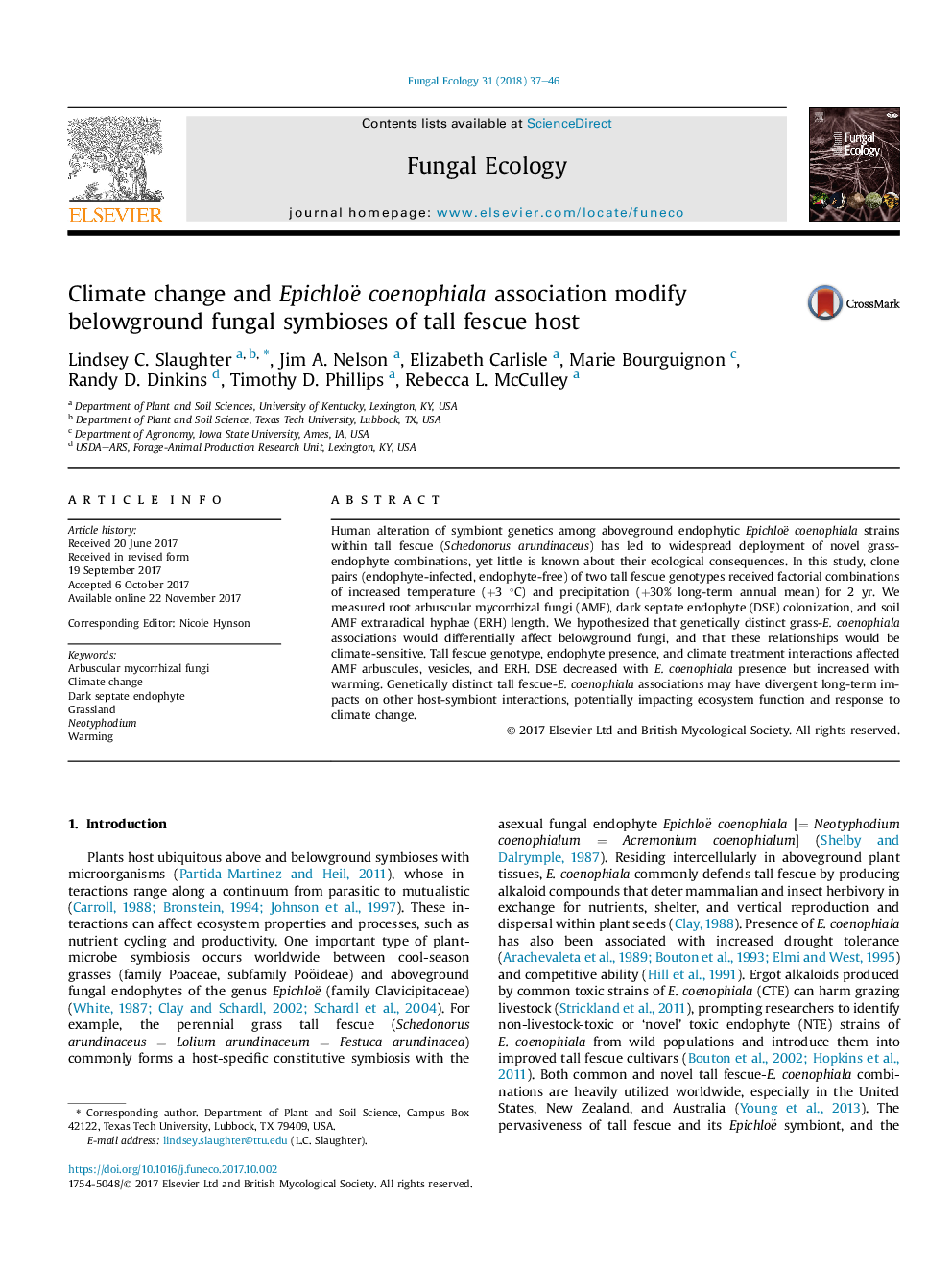| Article ID | Journal | Published Year | Pages | File Type |
|---|---|---|---|---|
| 8384264 | Fungal Ecology | 2018 | 10 Pages |
Abstract
Human alteration of symbiont genetics among aboveground endophytic Epichloë coenophiala strains within tall fescue (Schedonorus arundinaceus) has led to widespread deployment of novel grass-endophyte combinations, yet little is known about their ecological consequences. In this study, clone pairs (endophyte-infected, endophyte-free) of two tall fescue genotypes received factorial combinations of increased temperature (+3 °C) and precipitation (+30% long-term annual mean) for 2 yr. We measured root arbuscular mycorrhizal fungi (AMF), dark septate endophyte (DSE) colonization, and soil AMF extraradical hyphae (ERH) length. We hypothesized that genetically distinct grass-E. coenophiala associations would differentially affect belowground fungi, and that these relationships would be climate-sensitive. Tall fescue genotype, endophyte presence, and climate treatment interactions affected AMF arbuscules, vesicles, and ERH. DSE decreased with E. coenophiala presence but increased with warming. Genetically distinct tall fescue-E. coenophiala associations may have divergent long-term impacts on other host-symbiont interactions, potentially impacting ecosystem function and response to climate change.
Keywords
Related Topics
Life Sciences
Agricultural and Biological Sciences
Ecology, Evolution, Behavior and Systematics
Authors
Lindsey C. Slaughter, Jim A. Nelson, Elizabeth Carlisle, Marie Bourguignon, Randy D. Dinkins, Timothy D. Phillips, Rebecca L. McCulley,
